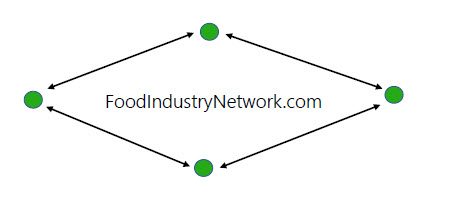Tyson feels beef squeeze | Farmtario

The United States is importing record amounts of beef this year and exporting less after ranchers slashed the nation’s cattle herd to its lowest level in decades. That has tightened margins for meat companies including Tyson Foods.
Read Also

Federal economic statement offers little for agriculture
Glacier FarmMedia – Agriculture mentions were light as the federal government unveiled its 2023 Fall Economic Statement Nov. 21. A…
The decline in cattle numbers, after years of drought-fried pasture, led to soaring U.S. beef prices. Higher prices incentivize companies to import cheaper beef and discourage U.S. beef purchases by China, Japan and Egypt.
Why it matters: The U.S. beef herd is the smallest it has been since 1962.
Analysts expect lower demand for U.S. beef and higher costs for cattle to translate into negative quarterly margins for Tyson’s beef business, its largest unit, for the first time this year.
The U.S. Department of Agriculture expected the U.S. to drop to the ranking of world’s fourth-largest beef and veal exporter this year, down from second in 2022.
U.S. beef exports are projected to sink 14 per cent this year from 2022 to about 1.4 million tonnes, the lowest since COVID-19 roiled meat processing and international trading in 2020, government data show.
In 2024, when the USDA expects U.S. production to decline further because of tight cattle supplies, exports are forecast to hit an eight-year low of 1.3 million tonnes.
U.S. beef exporters such as Tyson, Cargill and JBS face a double whammy from higher prices and strength in the U.S. dollar, which makes American products less attractive to other countries, said Pete Bonds, a Texas-based cattle producer.
“The future of this industry is not here in the United States,” Bonds said. “It’s offshore.”
For Tyson, losing U.S. export business compounds margin pressure from higher cattle prices, Goldman Sachs analysts said. U.S. beef exports typically command higher margins than domestic shipments, they said.
Goldman Sachs predicts margins will swing to negative 1.1 per cent for Tyson’s beef business from positive eight per cent a year ago. Adjusted margins were 0.2 per cent in Tyson’s second quarter this year and 1.6 per cent in the third quarter.
Tyson chief executive officer Donnie King in August warned low cattle inventories were leading to difficult export market conditions. The U.S. beef cow herd in January was the smallest since 1962.
Tyson has been reducing staff as its beef, chicken and pork units have struggled, with high prices prompting some Americans to eat less beef. The company said Nov. 9 it will close two plants in Florida and South Carolina where hundreds of workers cut and package meat.
Meat packers can use imports to help manage through low margins and high-priced U.S. cattle, analysts said. They often import lean beef from countries such as Australia and New Zealand to blend with fattier U.S. supplies to make hamburger.
Total U.S. imports from January through September were up about six per cent from a year earlier, with Australian shipments climbing by 49 per cent, according to government data.
U.S. ranchers have not started to rebuild the domestic herd, producers and analysts said, with more than half the nation’s cattle in areas that are still abnormally dry.
The number of heifers in U.S. feedlots as of Oct. 1 was up 1.3 per cent from a year earlier, signalling producers are fattening them for slaughter instead of keeping them on farms to reproduce.
The rebuilding process will likely be slow, keeping a lid on exports, producers and analysts said.
“Cattle numbers are tight and getting tighter,” said Derrell Peel, an agricultural economist with Oklahoma State University.
Source: Farmtario.com

